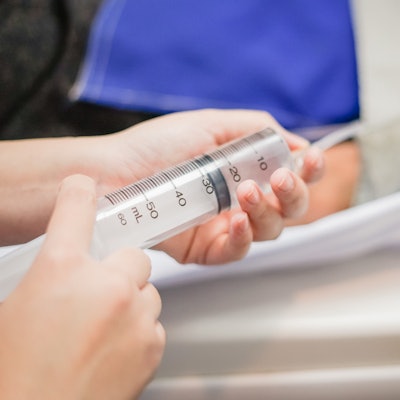Contrast-enhanced mammography (CEM) and digital breast tomosynthesis (DBT) could be alternatives to MRI in preoperative staging of breast cancer, suggest findings published August 23 in Current Problems in Diagnostic Radiology.
Researchers led by André Mattar, MD, PhD, from Hospital da Mulher in São Paulo, Brazil, found that the two modalities identified primary tumors in early-stage breast cancer at a rate comparable to that of MRI and showed substantial concordance with pathology.
“These modalities [CEM and DBT] offer valuable imaging options in settings where MRI is limited or contraindicated,” Mattar and colleagues wrote.
MRI is considered the gold standard for accurate preoperative staging, which is needed to guide treatment planning for the best outcomes in early-stage cancer. However, the researchers noted MRI’s higher costs and limited availability compared to other breast imaging modalities.
Mattar et al compared the performances of the following modalities for tumor detection and size estimation in women eligible for upfront surgery: full-field digital mammography (FFDM), DBT, CEM, and MRI.
The study included 46 women with an average age of 55 years who had histologically confirmed early-stage invasive breast cancer. The women underwent exams for all four imaging modalities within one week prior to surgery. The researchers used histopathology as the reference standard.
DBT and CEM identified the primary tumor in most to all cases, with CEM finding 100% of tumors, matching MRI. MRI achieved the highest concordance with pathology and tumor size correlation with pathology. It also found the most multifocal disease cases compared to the other modalities. However, CEM and MRI were not far behind in terms of concordance with pathology.
|
Performance of all breast imaging modalities |
||||
|
Measure |
FFDM |
DBT |
CEM |
MRI |
|
Primary tumors found |
89.1% |
97.8% |
100% |
100% |
|
Tumor size correlation with pathology |
0.314 |
0.636 |
0.660 |
0.811 |
|
Concordance with pathology |
58.7% |
71.7% |
71.7% |
80.4% |
|
Multifocal disease cases found |
0% |
8.7% |
6.5% |
15.2% |
Despite MRI outshining the other modalities in most areas, the researchers highlighted their results as supportive of integrating CEM into preoperative staging algorithms. CEM could serve as an adjunct or alternative to MRI in patients who may be uncomfortable with undergoing MRI exams, they wrote.
The study authors further highlighted that training breast radiologists to acquire and interpret CEM images “can broaden the diagnostic armamentarium in facilities where MRI access is constrained.”
“CEM offers a shorter acquisition time, lower cost, and greater availability than MRI,” the authors wrote. “While we did not perform a formal cost-effectiveness analysis, existing literature consistently supports the economic advantages of CEM over MRI.”
The team also called for multicenter studies with larger, more diverse cohorts to confirm CEM’s role across different clinical scenarios.
The full study can be found here.
